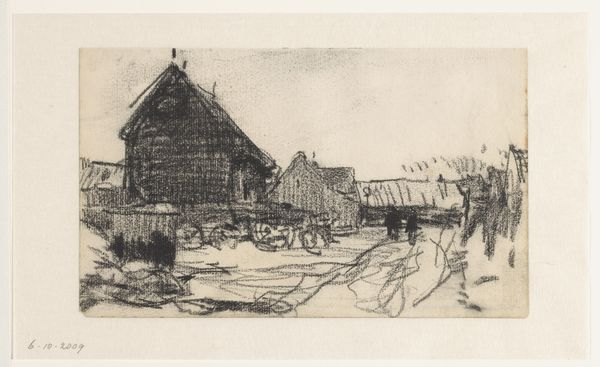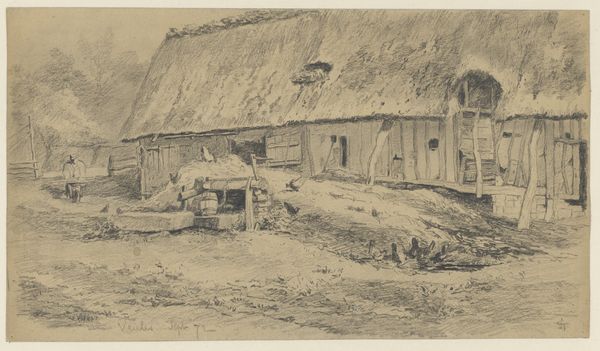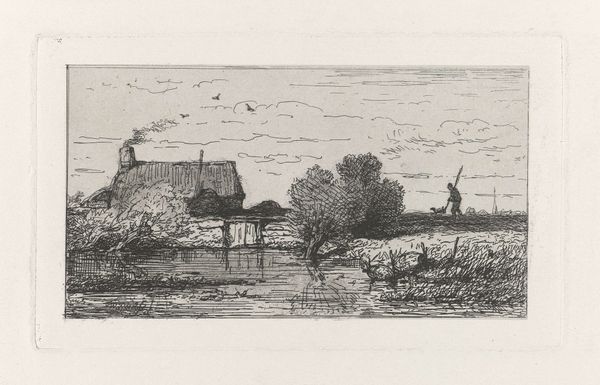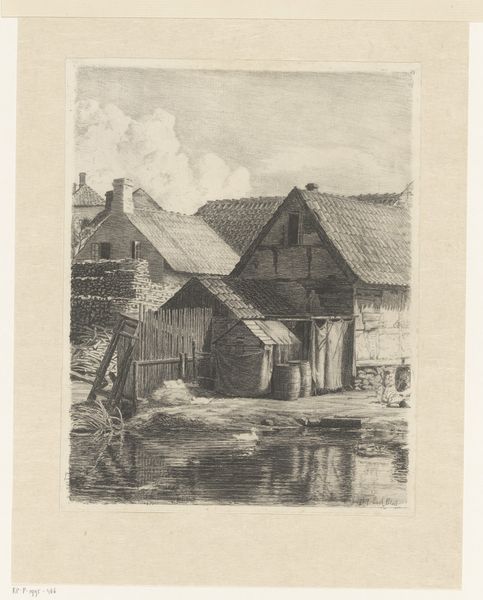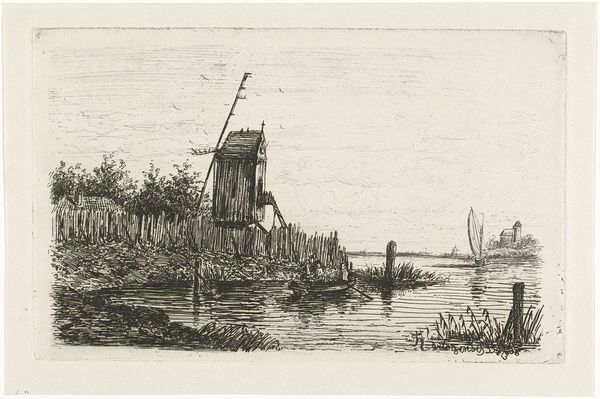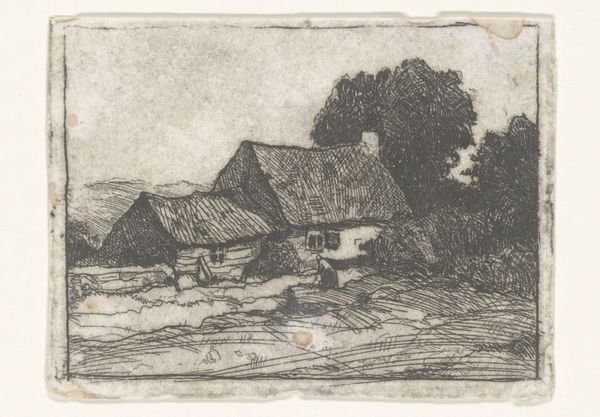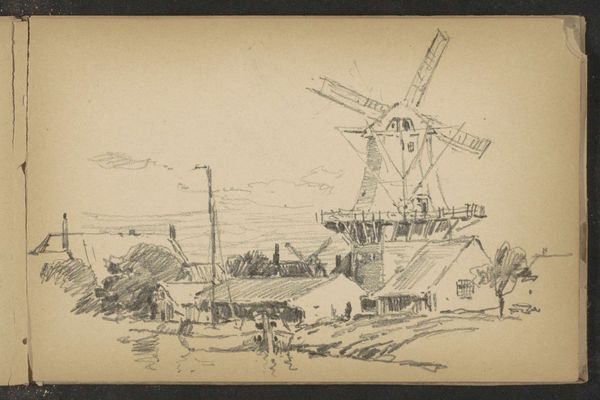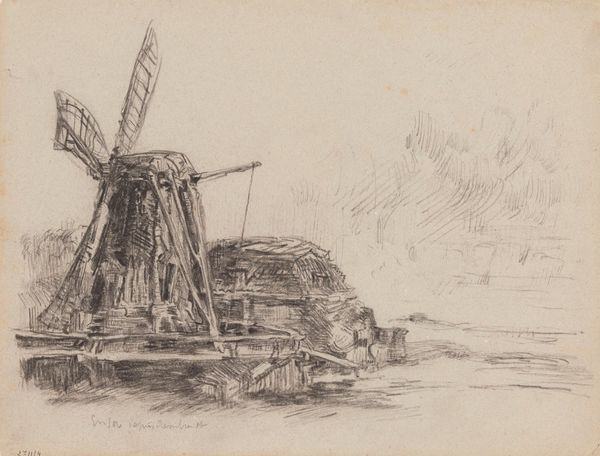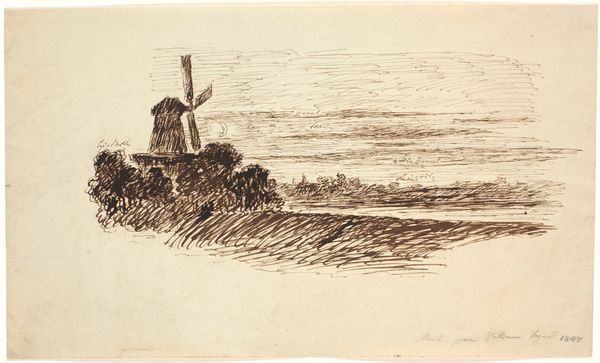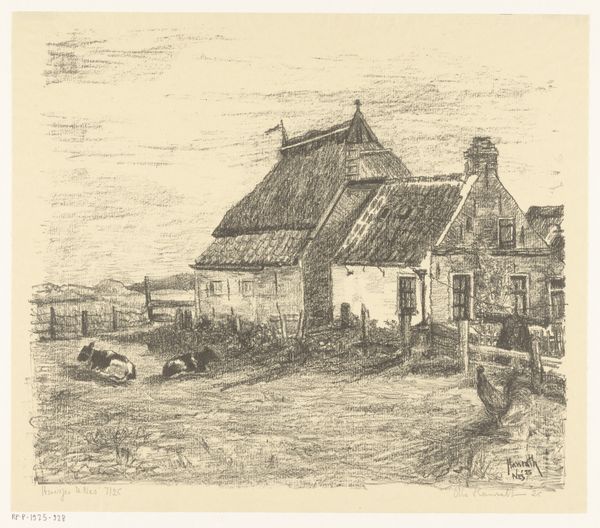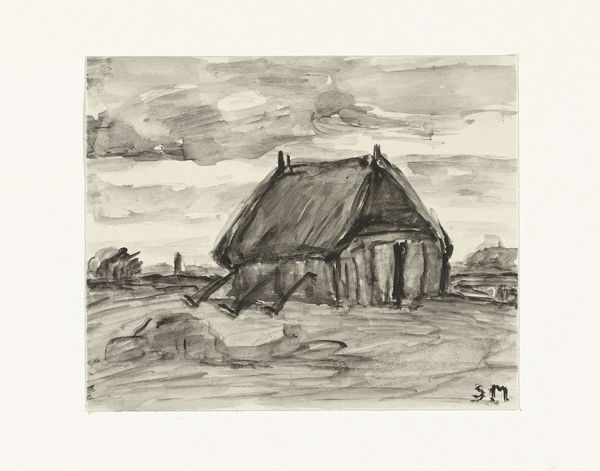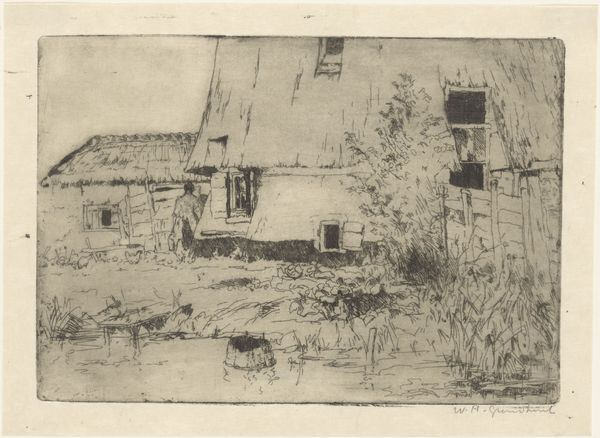
drawing, ink, pen
#
drawing
#
dutch-golden-age
#
pen sketch
#
landscape
#
etching
#
ink
#
pen
#
genre-painting
Dimensions: height 111 mm, width 181 mm
Copyright: Rijks Museum: Open Domain
Editor: Here we have "Dorpspad met molen," or "Village Road with Mill," by Theo Nieuwenhuis, made sometime between 1876 and 1951. It's a pen and ink drawing currently held at the Rijksmuseum. The sketch-like quality makes me wonder about its purpose. What can you tell me about this piece? Curator: I see a direct representation of labor and production. The mill, rendered with precise hatching, highlights the industry of rural life. The artist employs the simple materials of pen and ink, a conscious choice reflecting perhaps the accessibility and democratization of art production at the time. Note how the drawing doesn't attempt to romanticize rural life; it's a functional scene. Editor: So, you see the materials and subject as intertwined with the means of production. The pen and ink suggests widespread availability, and the mill represents industry. Is that a challenge to traditional high art, given its mundane subject? Curator: Exactly. This detailed rendering of a mill and village path, with the very visible mark-making, refuses to conceal the labor involved. It draws our attention to the working class through this landscape. Consider the context: were industrial landscapes and genre paintings of this type meant for consumption by a specific social class? What does that tell us? Editor: That makes me think about who could afford art materials and who the patrons were... This wasn’t necessarily art for the elite, but perhaps for a rising middle class. I hadn't considered the social implications of the artist's material choices. Curator: Precisely. And what does this tell us about Nieuwenhuis' social or political leanings through the choices of his artistry and composition? These types of choices often hold significance, telling a story beyond the immediate picture plane.
Comments
No comments
Be the first to comment and join the conversation on the ultimate creative platform.
